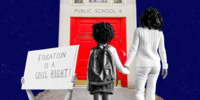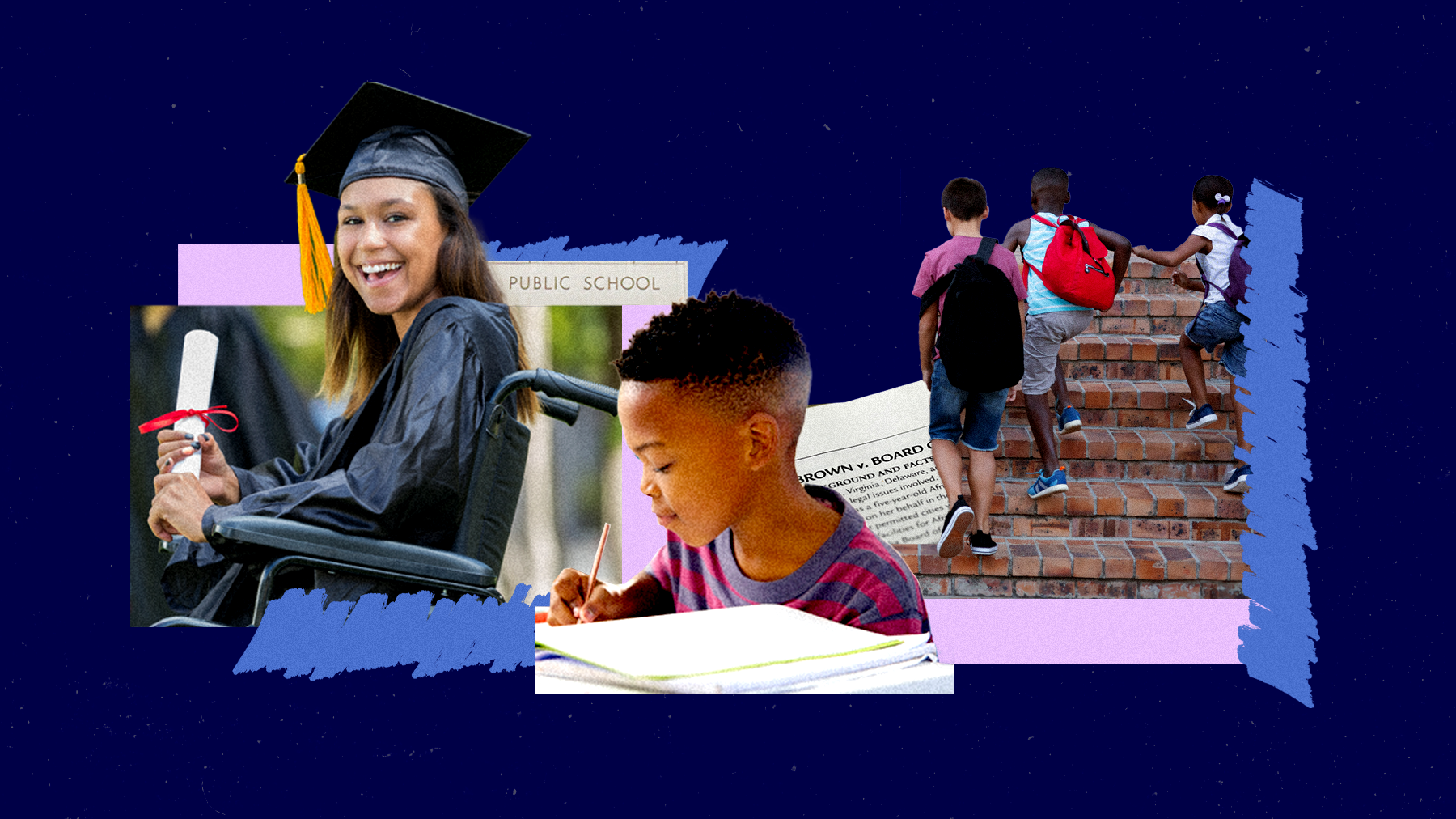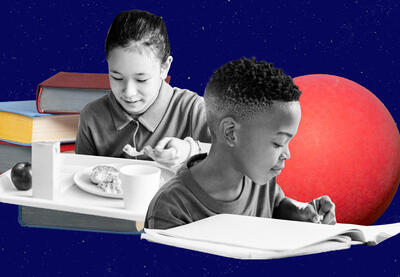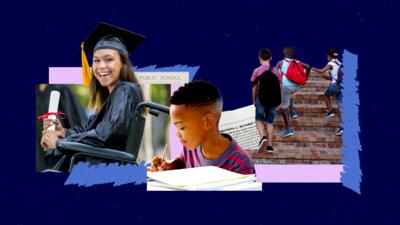Public schools fit within the broader conception of a “public good” or a “common good,” which refers to institutions and systems provided to all members of a society to meet obligations to care for the common interests of the whole.
Public education is the cornerstone of our democracy. That is not simply a tired cliché but the original premise of public schools. For our society to function and for citizens to engage in the democratic process, basic educational needs must be met, including, but not limited to, literacy and critical thinking.
An educated workforce offers advantages to employers and furthers innovation and societal benefits for all. But schools are not merely places for workforce preparation. Schools are sites for exploration of ideas across a range of subject areas — math, science and technology, literature, social sciences, physical education and more — in the quest to facilitate individuals becoming the best they can and living fulfilling lives. And beyond individual self-actualization and upward mobility, education offers collective growth and progress for entire communities.
Democracy in Action
In contrast to private schools that require approval for enrollment as well as a paid membership for attendance, public schools are free at the point of delivery and accept all children. Public schools, as a public good, are available to all students regardless of families’ ability to pay or any demographic factor. They serve all children zoned for enrollment regardless of a child’s academic performance, ability or disability, race, gender, religion, sexual orientation, political beliefs or immigration status. Further, because curricula for public schools are set at the state level and overseen at the district level, questions about textbooks, activities and other pedagogical approaches always have public input during school board meetings — a key point that “parents’ rights” groups that support discriminatory policies conveniently ignore. Public schools embody democracy in action.
Private schools, by contrast, represent an undemocratic method of schooling in which the school is in a position to pick and choose which students can or cannot attend based on any number of rationales. While vouchers are part of the “school choice” political agenda, in reality, parents and children do not have the choice because the decision to extend a membership in a private school rests solely with the school. Private schools are also free to hire anyone to serve as a teacher regardless of their training and academic credentials — or lack thereof. They can hire and fire based on the religious commitments of a teacher. And while parents who pay for a membership ostensibly have some say in what curricula and pedagogy look like, the broader public has zero input or accountability avenues into the practices of private schools. Additionally, even if a student is allowed to have a paid membership at a private school, the school maintains the authority to “counsel out” or “push out” any student at any point for any reason (e.g., academic performance, behavior, religious alignment and more). Vouchers, therefore, use public funds for private schools that have no accountability to the general public.
Serving the Common Good
Public schools fit within the broader conception of a “public good” or a “common good,” which refers to institutions and systems provided to all members of a society to meet obligations to care for the common interests of the whole.
For comparison, let us consider another public service — firefighting. The development of public firefighting arose following massive failures in approaching the service as a paid, individual commodity. Prior to wide-ranging adoption of publicly funded firefighting services, many cities considered the question of “who benefits from firefighting” by answering “only those who choose it and pay for it themselves.” This gave way to the rise of private firefighting companies.
If you have ever traveled to, say, Charleston, South Carolina, you may have seen historical markers on buildings that include preserved firefighting insurance plaques (also known as “fire marks”). These plaques indicated which house or building carried firefighting insurance so if the building caught fire, the appropriate private firefighting company would respond to extinguish the flames. Only those buildings that carried a private membership with company X, for example, would benefit from company X rushing to put out the fire while company Y would not respond to the flames. Additionally, the public display of the plaque was seen as a deterrent to would-be arsonists, as the firefighting company would be incentivized to investigate and seek punishment for any arson on a protected property (thus conveying a public message of which buildings were worth protection and which were not, directly correlating to the financial well-being of the building owner).
In very real scenarios, if a fire were to break out in a home that had a membership with a firefighting company, the company would arrive to extinguish the flames, while doing nothing to protect the adjacent homes that either had a membership with a different company or had no private firefighting insurance at all. This system, eventually, was rightly seen as not only a public safety concern but also as an artifact of societal injustice, as only the affluent were able to afford private memberships with firefighting companies. Believing that firefighting was an individualistic commodity threatened the lives and livelihoods of all citizens of a town — including the affluent who had coverage. Even a wealthy family who had paid for a private membership with a firefighting company would suffer from a financial, moral and societal standpoint if the entire block burned down and theirs was the only house for which flames were extinguished.
People began to understand that firefighting was a public and common good that was obligated toward all citizens — regardless of their ability to pay for private memberships — because the damages of fire are widespread, both literally and figuratively. This concept of the common good applies exactly to education and public schools.
While vouchers are part of the “school choice” political agenda, in reality parents and children do not have the choice because the decision to extend a membership in the private school rests solely with the school.
The notion that education services should be privatized by way of private schools or homeschooling (vouchers or otherwise) fundamentally reimagines the purpose of education as an individualistic commodity rather than a public good. When an individual student succeeds, they certainly benefit from that process (self-actualization), but the local community benefits from a socialized and educated future generation moving into adulthood.
Some common-good benefits of public education include the following:
- Schools can serve as community centers. Schools often host events and activities, some of which cover academic topics related to the school, while others provide services such as adult literacy programs, voting centers, family programs, and student health and well-being services.
- Schools provide an unparalleled opportunity for students to interact with peers from diverse backgrounds (e.g., racial, cultural, socioeconomic, ability, political and more). In addition to the individual benefits students experience by being exposed to diversity, experiences in such environments prepare future adults to live and work in a diverse and multicultural society.
- Public funding of public schools means the cost associated with educating children is spread across society rather than shouldered by the individual family. Societies and communities, in turn, benefit financially through a stronger workforce stemming from students receiving lifelong skills.
- Public schools often provide economic benefits for communities, including employment, economic opportunities and encouragement for families to move to or remain in a community.
- Public schools, especially community schools, can promote stronger communities by building relationships among families and educators and partnerships with community organizations and businesses.
This understanding of education’s benefit to the common good is why all property-owning citizens pay a portion of their property taxes to support local public schools, even if that homeowner does not have children or their children are no longer in public schools. Additionally, because public schools aim to serve all students across all communities and because public schools are responsible for providing these individual and collective benefits, the intention is for them to be inclusive and accepting of all students — regardless of race, class, gender, disability, ethnicity, religion, sexual orientation or politics. And while public schools in the United States have not yet fully realized their full potential toward equity, a lot of progress has been made. Much of that progress was the result of the U.S. Department of Education and the federal government’s oversight to ensure state compliance with civil rights laws aimed at creating inclusive environments and equal opportunities.
The U.S. Department of Education
Understanding the Role and Responsibilities of the Department of Education
Understanding the responsibilities of the U.S. Department of Education is an important step in addressing current threats to education rights and equal opportunities.
Learn more about the department and its five high-impact responsibilities that affect lives and promote educational excellence for a more competitive future.
The public benefit of the education of any one individual — and the collective of all students — is profound in terms of social cohesion and economic success, so society has a vested interest in supporting public education as a public good. Beyond that, society has a collective moral obligation to children to ensure they are afforded every opportunity to experience a quality education that is free at the point of delivery and will not disenfranchise or discriminate against them.
The Education Department’s establishment in 1980 as a Cabinet-level agency emphasized our commitment as a nation to public education. The department’s five high-impact responsibilities reflect local, state and national priorities for public education:
- Fund research and new approaches to improving education that provide high-quality data, statistics and evaluation to inform education policies and practices.
- Ensure equal access to education and civil rights protections for all students.
- Improve education outcomes for students with disabilities with programs that ensure equal access to education and support student needs.
- Improve education for all students by closing the gap in education outcomes for students from families with low incomes and those experiencing poverty.
- Fund and support higher education access and opportunities for students to ensure the nation’s future global competitiveness.
These goals aim to create a more inclusive public education system that serves and benefits all children and communities. Political actions by the current administration, however, threaten to hobble the ability of the Education Department to enforce civil rights protections, and indeed, to function in ensuring education excellence. For example, the recent actions raise significant questions regarding what the elimination of the Education Department might mean for students with disabilities, as the agency is the primary accountability mechanism for state compliance with the federal Individuals with Disabilities Education Act (IDEA).
The Ongoing Education Justice Movement
In addition to academic learning, in many cases, public schools are the only place where some students are able to get a hot and healthy meal once or twice a day. For others, it represents a place of consistency, stability and safety. Public schools provide students from all walks of life and backgrounds an opportunity to socialize, engage with rigorous curricula, participate in extracurricular activities, participate in field trips to cultural centers like museums, engage in the arts and more, much of which would otherwise be out of reach for some students.
Public education is a vital common good for our democracy and society, and education institutions demand not only protection but greater investment. Despite claims by voucher advocates, the creation and expansion of vouchers cause a direct and measurable reduction in the funding allocated to public schools. To be clear, despite the aim of public schools to provide equal and equitable access to, and experiences with, quality education for all children, our nation’s schools have yet to fulfill that promise. Mired in the country’s own history of discriminatory practices, U.S. public schools have privileged affluent and white students in myriad ways over the last century. From funding disparities that provide more financial support for affluent and white schools due to property value and tax variance, to a lack of racial and cultural representation in the standardized curriculum, lack of diversity among educators and administrators, and problematic discipline policies, to name only a few issue areas, public schools remain in need of reform.
Despite these problems, however, public schools remain an ideal mechanism to eventually achieve democracy’s aims, which include equal and equitable education for all children. We can simultaneously celebrate the integral role that public schools have in our nation while critiquing components of education practice and advocating for improvements. Reforms are warranted for our schools to become more inclusive and just spaces for learning and well-being. In short, funding discrepancies must be addressed. Racial discrimination in zoning must be addressed. Discrepancy of racial injustice in discipline policies must be addressed. Teacher salaries must be raised. Parents, caregivers and teachers must deepen the conversations and partnerships they have as they strive toward providing children with excellence in education. These are all areas for improvement with achievable reforms that we can solve because we, collectively, share this obligation as we, collectively, share in its outcomes.
Read More
Public schools are an ideal and vital mechanism to achieve a thriving democracy. The current efforts to dismantle public education (and our democracy) include removing vital resources from public schools.

Read the next articles in this series on public schools as a common good, examining possibilities and threats.
Understanding How Schools Are Labeled

School Vouchers and the Efforts To Undermine Public Education
Reflection and Action
- Consider how public schools play a vital role in your community. What connections do you see? What are some possibilities for partnerships between schools, parents and caregivers, and community organizations and businesses?
- Reflect on your public schooling experience. How do you remember your school years, and why is this important to keep in mind today?
- Learn more about the laws that protect children’s rights in education, and speak up at school board meetings to address issues.
- Build strong relationships with educators and organize advocacy groups to support young people’s right to a quality education.

Take action: Join us in advocating for public education that fosters excellence and equity. Learn more with Learning for Justice’s “Advocating for Public Schools” resource.
Resources
Join us in advocating for public education that fosters excellence and equity. Learn more and take action with these resources:
- Advocating for Public Education (Learning for Justice)
- Understanding the Role and Responsibilities of the Department of Education (Learning for Justice)
- Issue Explainer: Vouchers (National Education Association)
- The Fiscal Consequences of Private School Vouchers (Public Funds Public Schools)
- Inequity in School Funding: Southern States Must Prioritize Fair Public School Spending (Education Law Center)
- Miles To Go: The State of Education for Black Students in America (Southern Education Foundation)
- Interactive Tools (Public Funds Public Schools)
- Voucher Bill Tracker (Public Funds Public Schools)
- Florida Private Education Vouchers Cost $4 Billion This School Year (Education Law Center)
- Action Kit: Stop Closing Public Schools (Advancement Project)
- The Dangers of Private School Vouchers for Idaho Students, Schools, and Communities (Public Funds Public Schools and Idaho Center for Fiscal Policy)
- How Vouchers Harm Public Schools (Economic Policy Institute)

Demanding Excellence and Equity
Education Justice Series
Public education is an essential common-good service and a cornerstone of democracy. This series can help us recognize damaging policies and practices and formulate strategies to ensure equitable public education.

